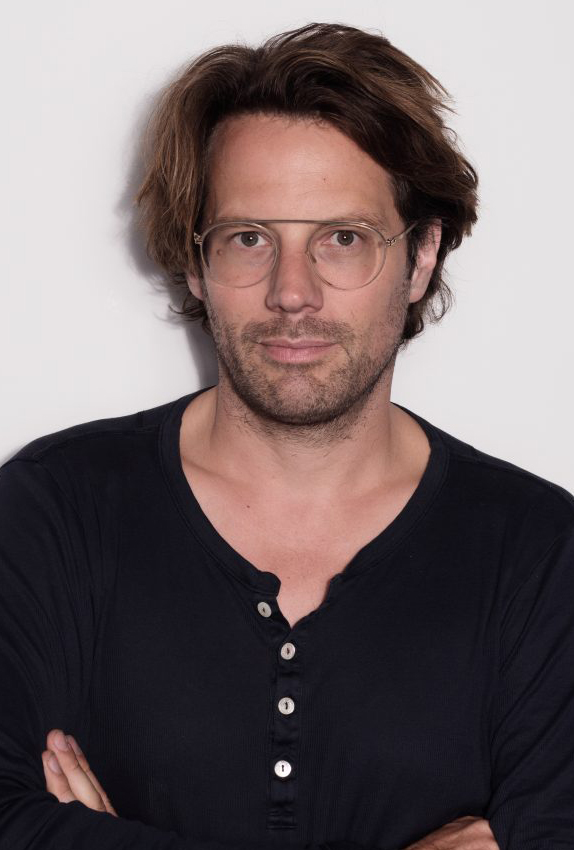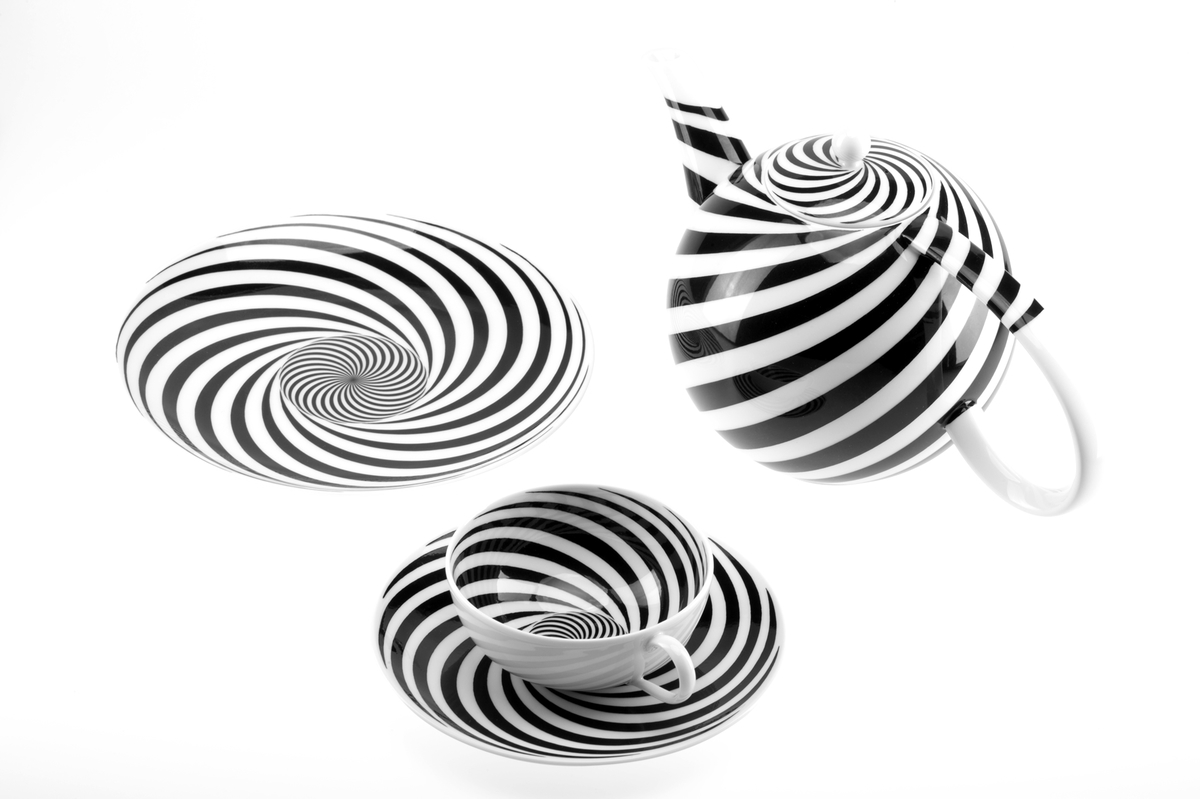KAIROS 17 – OBJECT 17
das objekt: eine Teetasse
the object: a teacup
Ich glaube, dass man die Dinge nicht zwingen kann. Man muss abwarten. Deshalb trinke ich gerne Tee. Zum Teetrinken braucht man eine Teetasse. Man kann Tee auch aus einem Glas oder einer Kaffeetasse trinken, aber ich bevorzuge eine Teetasse. Mein Objekt ist deshalb eine Teetasse. Ich hatte auch das Glück, einmal ein Teeservice (um-)gestalten zu dürfen. Praktischerweise ist also die Teetasse eine, die von mir (mit-)gestaltet ist. In diesem Teeservice kommen zwei sehr verschiedene Designtraditionen zusammen: Die minimalistische Eleganz der klassischen Moderne, hier vertreten durch Trude Petri, und Enzo Mari, den man so schwer einordnen kann, außer, dass er alles radikal anders macht. In seinem Teeservice hat er alles umgedreht und das ist schon sehr lustig. Außerdem hat das Teeservice einen dysfunktionalen Goldrand und ein hysterisches Dekor. Das habe ich zu verantworten.


ON Friedrich von Borries
Ich heiße Friedrich von Borries, habe Architektur studiert und bin jetzt Professor für Designtheorie an der HFBK Hamburg. Ich beschäftige mich mit dem Verhältnis von Gestaltung und Gesellschaft, weil ich immer noch hoffe, dass man eine »bessere Welt« entwerfen kann. Ich lebe in Berlin und manchmal Havelberg. Die meiste Zeit denke ich, manchmal schreibe ich und manchmal rede ich. Sehr viel mehr gibt es, glaube ich, erstmal nicht zu sagen.
—
Friedrich von Borries is Architect and Professor für Designtheorie at Hochschule für bildende Künste in Hamburg and as such he wrote numerous texts on design and design politics.
His project School of no consequences – exercises for a new life is on show till 9. May in Museum für Kunst und Gewerbe in Hamburg. As part of an educational programme he introduced the Scholarship for Doing Nothing.
KAIROS 17 – A Talk with Friedrich von Borries – 41 Participants
Zusammenfassung
Friedrich von Borries // Kairos 17
A very inspiring talk with Friedrich von Borries, who discusses the concept of design, the role of the designer and the function of design with us.
Friedrich von Borries explains Kairos moments as coincidences in life and moments in which topics, you already deal with, appear condensed– You suddenly see something where everything you are dealing with comes together.
This is also how he arrived at the topic of his promotional work, which he describes as his first Kairos. Having walked around the city, he spotted by Nike branded sports fields in Berlin which lead him to the topic of marketing strategies in urban space and covered design, architecture and urban planning at the same time.
He sees another Kairos in Axel, who offered him, as an architect, a teaching position in design at Udk. Axel was the one explaining him that he was clearly doing design theory. Today, Friedrich works as a design theorist.
The object he asked us to bring is a teacup, which also reflects for him what his work is about.
It is in ‚Abwarten und Teetrinken‘ (engl.: wait and see) that his ideas emerge. For him, this moment of eating and seeing also implies a deep trust that things will come as they should. In his RLF project, the teacup also played an important role and he was once allowed to design the surface of a teacup in a project with KPM. For him, like his work, this object covers a theoretical part, a design part and an artistic part and different disciplinary approaches come together.
Axel made then several references to ‚Abwarten und Tee trinken‘ (engl.: wait and see): Firstly a possible ‘Folgenlosigkeit’ (engl.: non-consequence)– with which he addresses Friedrich von Borries‘ ‘Schule der Folgenlosigkeit’ (engl.: School of no consequences) and the scholarship he awarded for doing nothing– and secondly he addresses ‘das Entwerfen’ (engl.: designing) and the implied speed inherent in ‚werfen‘.
Friedrichs way of responding to this gave us a hint of his way of thinking and analyzing.
For Friedrich, designing is not necessarily to be understood as fast. Linguistically, the ‚Ent‘ in ‚Entwerfen‘ even describes something withdrawing, a movement that does not just go straight ahead and fast, as ‚werfen‘ would describe it. This also brings him to ‚verwerfen‘ (egal.: discarding), which is an exercise that he believes we all need to cultivate and learn, especially at university.
That, in turn, has to do with what he discusses under ‚Folgenlosigkeit‘. Doing nothing, refraining from doing something, and also that it can be nice to refrain from doing things. Why just doing nothing is so difficult for many people, for Friedrich, refers to the fact that it is not part of our culture of thinking. We would mostly think in terms of success making it difficult to think the opposite.
In the ‚Schule der Folgenlosigkeit‘, he often encounters contradictions striving for being with no consequences, but at the same time initiating steps that lead to success and thus not remain with no consequences. That’s why, in his eyes, it’s conceptually coherent that the exhibition in Hamburg on this project remains, due to corona, closed. Even if it never opened, it would be coherent.
The current time for the exhibition also fits: it makes us think about our consequences in a different way: every meeting has consequences at the moment, we are in a kind of marathon of consequences that we have never known before. For Friedrich, in this respect, the project fits in very well with the times.
Friedrich mentioned a quite expressive quote of climate activist Tadzio Müller which also became his personal leitmotif for the project: We have to make very consequential decisions now in order to be able to live a non-consequence life someday. This contradiction is very central and important for our time, he said.
When Ineke asked what decisions these could be in his eyes, Borries replied that he was not a missionary type and did not want to give instructions, not even in his books. He always tries to stimulate, to get discussions going and to provoke reactions. He recognises himself in the role of a provocateur. But he also sees himself in the role of a moderator in projects, which, as the opposite of the provocateur, is usually not visible and therefore not so quickly associated with him.
Friedrich prefers to see his work as a broad concept of design: He can combine different disciplines in a meaningful way. what brings us back to the moderator. He shows us a very central function of design: linking and creating synergies. He also avoids giving himself a disciplinary term like ‚architect‘ or author and prefers to describe himself as ’sub-disciplinary‘ or as a process designer knowing what he is good at: developing concepts, writing texts, linking contacts.
It was very nice to observe how clear Friedrich defines himself and his work without assigning to a specific discipline.
On the subject of Kairos, Friedrich concludes: you can only seize opportunities if you always remain open to the fact that everything could always turn out differently. That is a very important basic attitude, without which such moments,like Kairos moments, cannot reveal themselves.
Kim Kuhl
